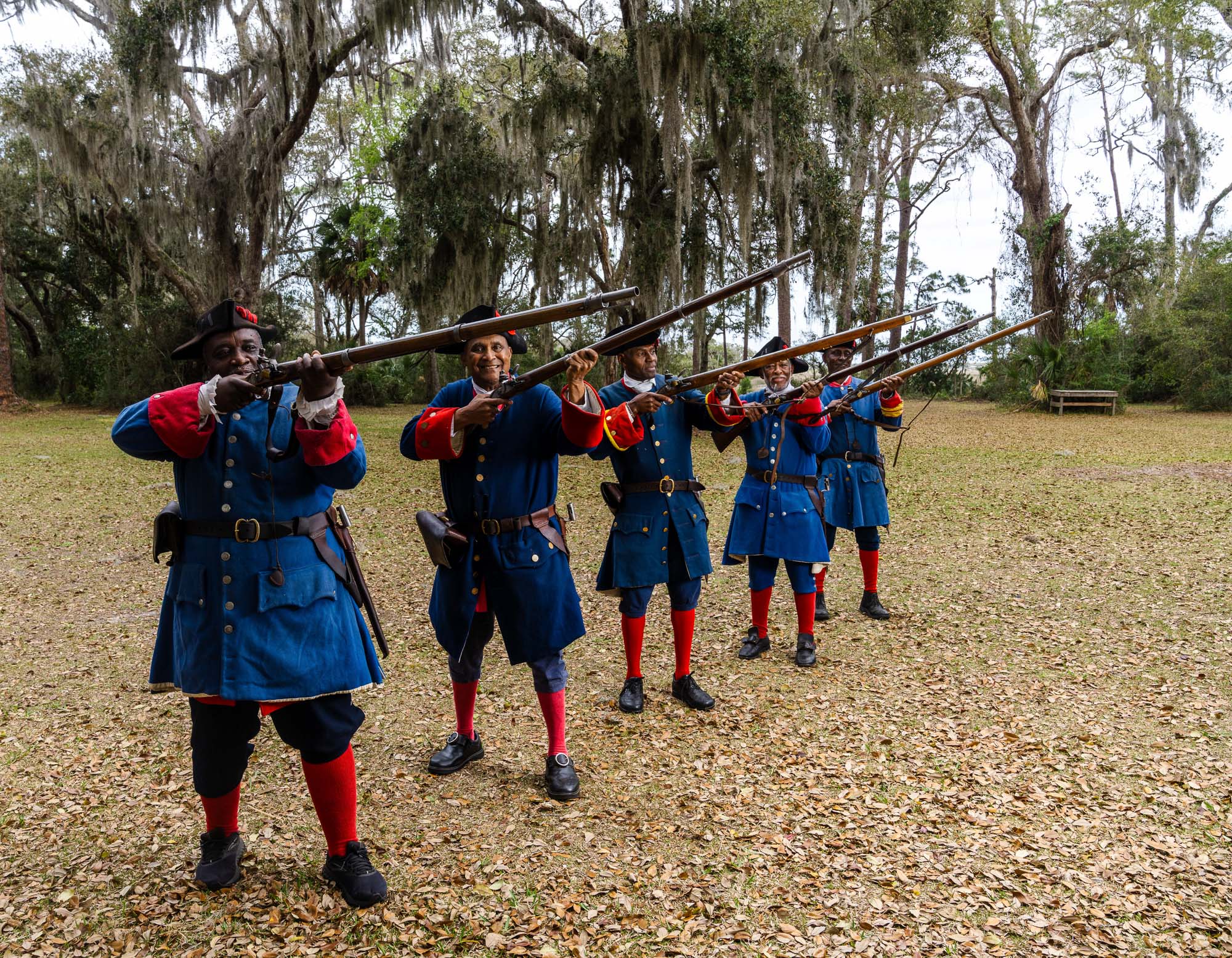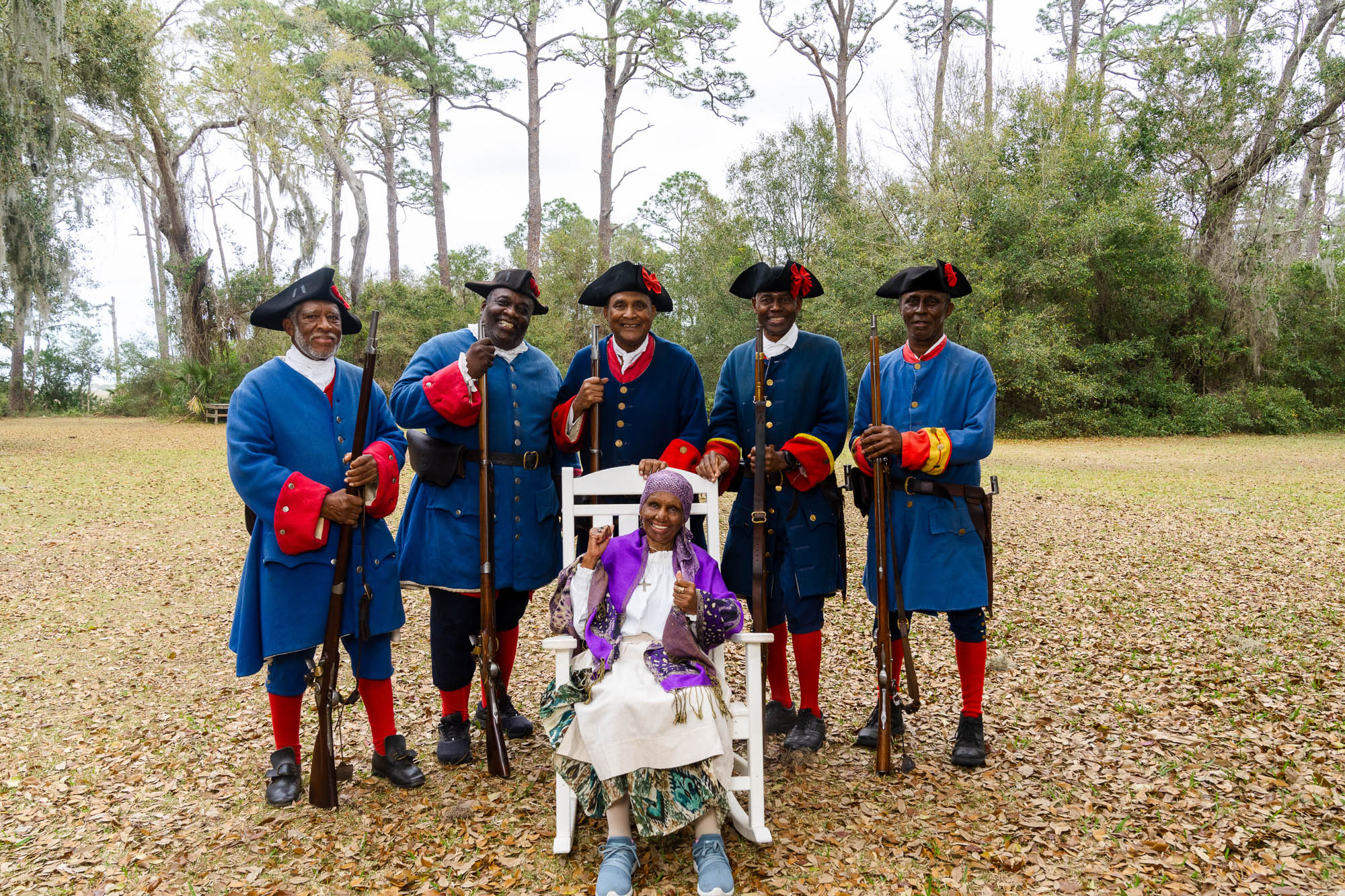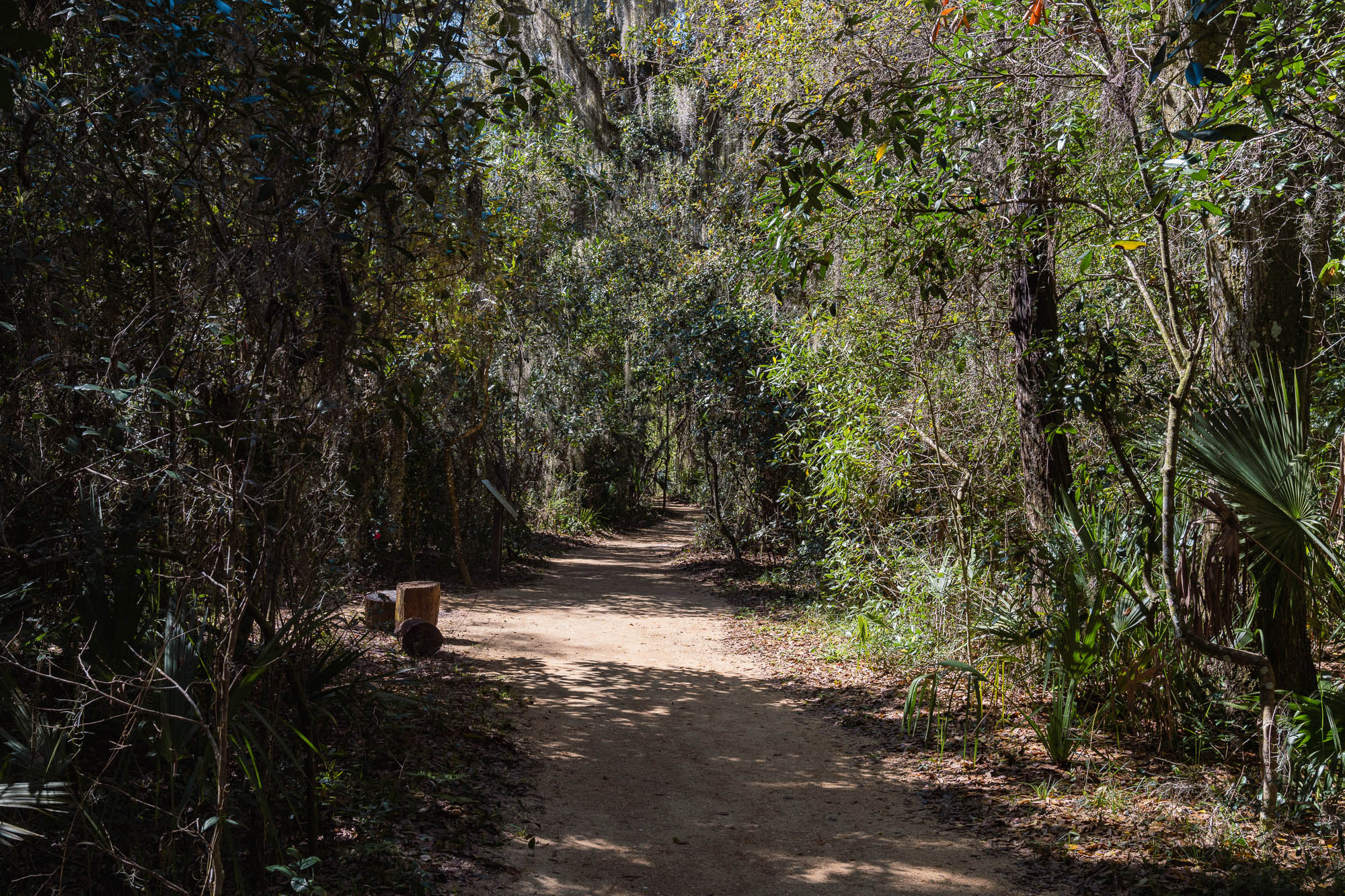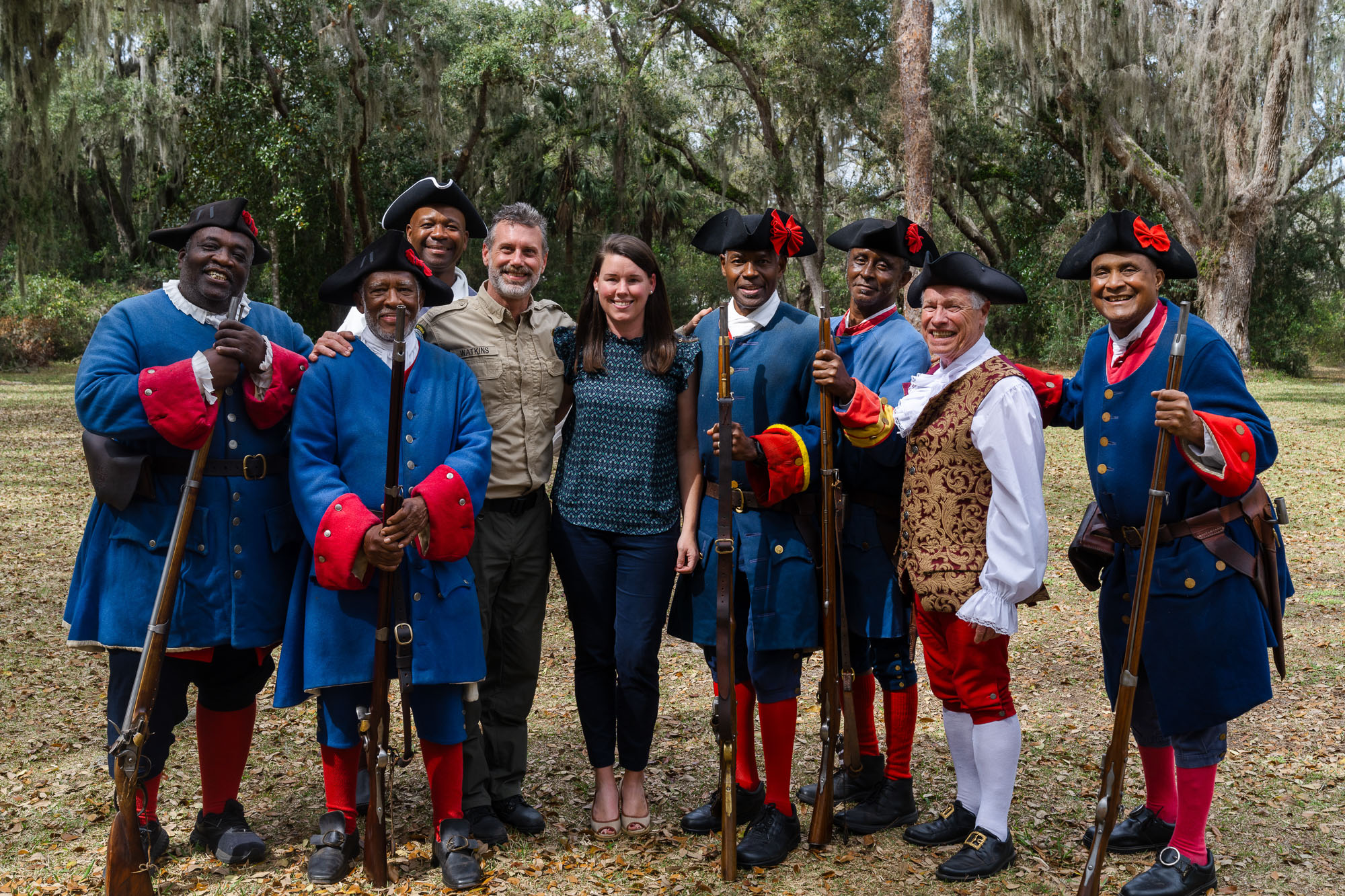‘May Our Stories Endure’ at Fort Mose
Words and photos by Adventurist George McKenzie Jr.
This spring, a suggestion from Florida State Parks Foundation‘s director Julia Gill Woodward steered my attention to a historical gem unbeknownst to me — Fort Mose Historic State Park in St. Augustine, Florida.

This beacon of freedom, nestled just beyond the outskirts of the oldest European settlement in the United States, would unfold its narrative before me, one where free black individuals not only sought refuge but also thrived.
Embarking on this journey to Fort Mose, I was transported back to the 18th century, to a time when the landscape of power in the New World was as tumultuous as the Atlantic waters that bordered it. Established in 1738, Fort Mose, or Gracia Real de Santa Teresa de Mose, emerged as the first free African settlement in what is now the United States. This settlement represented an epoch of early emancipation, predating the emancipation movements that would later sweep across the nation.

The edict of 1693 by King Charles II of Spain was a clarion call to enslaved individuals — an offer of freedom in Spanish Florida in exchange for allegiance and conversion to Catholicism. Fort Mose, hence, became a sanctuary, a beacon for the dispossessed and disenfranchised escaping from the English colonies. It was not just a place of refuge but a crucible of a new cultural community, intertwining Native American, Spanish, and English customs, spearheaded by the diverse African influences that its residents brought with them.
Fort Mose’s significance transcended its role as a haven. It stood as a pivotal military stronghold, a northern guardian to St. Augustine. Its free African militia, in collaboration with Spanish forces and Native American allies, was instrumental in the defense of Spanish Florida, particularly during the British assault led by General James Oglethorpe in 1740. This battle marked not just a military victory but a symbolic triumph for freedom and self-determination.

My visit to Fort Mose offered a profound connection to this rich history as I watched the reenactors, clad in historical garb, recreate the Battle of Fort Mose. Capturing these moments through my lens, I felt the resonance of their muskets, a reverberation of the past courage that once defended this land. These images, set against the backdrop of the fort’s landscape, draped in the haunting beauty of Spanish moss, provided a palpable sense of place and time.
These reenactors, representing the valorous militia of Fort Mose, are modern bearers of a historical legacy, ensuring that the fort’s narrative endures. MOSE — an acronym standing for “May Our Stories Endure” — encapsulates the essence of Fort Mose’s history. It is a pledge to the continuity of a story that speaks volumes about the struggle for freedom and human dignity. The acronym reflects the determination to keep the history of Fort Mose alive, ensuring that it remains a beacon for present and future generations to comprehend the breadth of American history and the African-American experience.

The archaeological excavations at Fort Mose have unearthed artifacts that offer a glimpse into the daily lives of its inhabitants. These relics, showcased in the museum at the Visitor Center, narrate stories of a self-sufficient community that withstood the test of time and adversity. The fort’s strategic location along the tidal channels provided its inhabitants with a source of sustenance and livelihood, as evidenced by the diet rich in marine proteins revealed through zooarchaeological analysis.
In 1994, Fort Mose was rightfully designated as a National Historic Landmark and was listed on the National Register of Historic Places. UNESCO’s recognition of Fort Mose as a Site of Memory in 2019 further underscores its universal importance as a place where the narrative of freedom and the human spirit’s endurance came into sharp focus.

As we weave together the historical tapestry of Fort Mose with contemporary efforts to preserve and interpret its legacy, we are reminded of the importance of storytelling in history. The reenactments, the ongoing archaeological work, and the educational programs all serve a singular purpose — to ensure that the lessons and legacies of Fort Mose continue to resonate and inform.
In crafting a narrative around Fort Mose and my photographic journey there, it’s crucial to reflect on what this site means within the larger context of American history. The fort serves as a powerful reminder of our nation’s multifaceted history, where battles were not only fought on fields of war but within the hearts and minds of those yearning for a rightful place in society.
To visit Fort Mose is to step into a chapter of history that is as stirring as it is instructive. The preservation of this site and the continued interpretation of its history are not merely academic exercises but acts of remembrance and respect for those who carved out a space of self-determination and refuge in this place.

